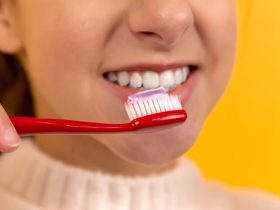Aeration is a wastewater treatment method where the air is added to enhance biological growth. Fine bubble diffusers work by dissolving oxygen into wastewater.
The purpose of the process is to ensure that microorganisms dissolve the oxygen, and in the process, they breakdown into organic material. The process has come a long way into replacing coarse bubble diffusers when treating wastewater and sewage water.
What are Fine Bubble Diffusers?
Fine bubble diffusers are needle-shaped perforated panels. There are also other fine bubbles of various sizes including standard disc and other tubes which have at least 1 mm perforations. Fine bubbles with larger apertures are referred to as medium bubbles, and their size is at least 2 mm.
Fine Bubble Diffuser Performance
The way standard fine bubbles perform is well understood in the market. The most understood facts are that the fine bubbles do their work by providing 2%/ft – 6.5% /ft standard oxygen transfer efficiency, otherwise referred to as SOTE.
When they are new, they drop the pressure by 12” WG – 30 mbar. They usually produce bubbles ranging from the sizes of 1 mm to 3 mm.
When you compare fine bubble differs with coarse bubble diffusers, the differences are glaring. First of all, coarse bubble diffusers fail to meet the challenges that fine bubble diffusers can withstand.
They usually last for one or two years before they crack, blow off or clog. So, what are the advantages of using fine bubble diffusers in wastewater treatment?
Why Use Fine Bubble Diffusers is Wastewater Treatment
- High Aeration Efficiency
Fine bubble aeration system boosts a lot of advantages with the main one being energy efficiency. The cases of aeration technologies competing with fine bubble aeration technique are very few, especially in terms of energy efficiency.
In many instances, switching from coarse bubble aeration and lagoon aeration to fine bubble diffusers saves you a lot of money. It can save you about 60% or more in terms of energy costs.
- Aeration Tanks have Improved Levels of Dissolved Oxygen
Many systems in the market have difficulties maintaining the required oxygen transfer efficiency performance. But, when you are using a fine bubble aeration tank, the standard oxygen transfer efficiency can reach up to 2.2% for every foot of submergence.
If you wish to install a fine bubble aeration tank in your wastewater treatment center, you will surely notice an increase in the dissolved oxygen.
- Fine Bubble Aeration Tanks are Easy to Maintain
When compared to surface tanks, a fine bubble aeration tank has few motors to maintain. For instance, a surface motor has at least 5 to 10 motor aerators, but fine bubble diffusers have only two to three blowers.
The motors are also easily accessible because they are onshore. It is a good way of cutting down on materials and maintenance time.
- The Entire Water Column Gets Circulation
It is all dependent on the type of fine bubble diffuser and the depth. The critical point is that there is at least 4000 gallons of water that go through the process in one minute. An aeration tank works best when the air bubbles are tiny because of the rate of diffusion of oxygen from the air to water increases.
- Tank Depth and Design
The design of an aeration tank is essential in optimizing the efficiency of the system. A flawed aeration system design can ruin an aeration tank that was designed to perform at its maximum efficiency. Without considering the budget, there are many technical issues that you should consider including the hardware you will use and buffer treatment capacity.
According to gustawater, there are some few considerations that you should keep in mind, such as the depth of the tank. Another issue that you should be on the lookout for is the aerator’s ability to pump beyond a certain depth.
If the system fails to pump beyond a given depth, pockets of whole or idle layers will accumulate and hinder the pump from functioning as expected.
- Fine Bubble Diffusers Have Long Operational Life
Whenever you want to buy new equipment, you want one that will give you service for the longest time possible. If you get an aeration tank at gustawater, you will get a reliable device that is well built to provide you with service for many years to come.
To get the best aeration tank, you should consider various factors such as the chemical makeup of the water you intend to clean. A reputable supplier like gustawater is capable of providing you with water diffusers that have a long life.
Many things affect the operational life of your aeration tanks. The most common include:
- Significant oil in the wastewater
- Non-biodegradable items in the water
- Increased energy costs
- Wastewater discharge in nearby waterways (environmental violation)
You should go for fine bubble diffusers that you are sure will live up to their expected life expectancy.
- Low Installation Cost
Installing a fine bubble diffuser is less costly compared to other systems such as coarse bubble diffusers. The systems also have high strength NPT(M) connections and ABS body.
A fine bubble diffuser improves oxygen transfer efficiency, which lowers the cost of operations when the system is in use. The system also uses less power compared to other systems.
- High Adjustment Levels
An aeration tank used in fine bubble diffusers has high levels of adjustment. The system also has air control valves, which help in increasing the efficiency of the system. The biomixer have in recent times been reduced from 3 to 5. It is an additional feature which makes it possible to lower the time required to perform the filtration process.
- Lightweight
Fine bubble differs are lightweight compared to coarse diffusers. It is a significant improvement in technology because it makes the process of installation much more manageable.
It is also an advantage because when repairs are needed, the labor force required to lift the system out of the water is reduced.
- 316 Stainless Steel Material
New diffusers are made out of 316 stainless steel. It is an essential aspect of manufacturing because these devices are meant to be used underwater.
Therefore, using stainless steel is the best way to go because you want your fine bubble diffuser to last as long as possible.
There are many advantages of using fine bubble diffusers in wastewater treatment. The devices have been in the market for over 20 years. Gustawater has many varieties that you can choose. The machines have proved their efficiency over time as well as their ability to perform exceptionally well underwater. If you select the right machine, you will have a device that will operate with efficiency at low operational and maintenance costs.














Leave a Reply